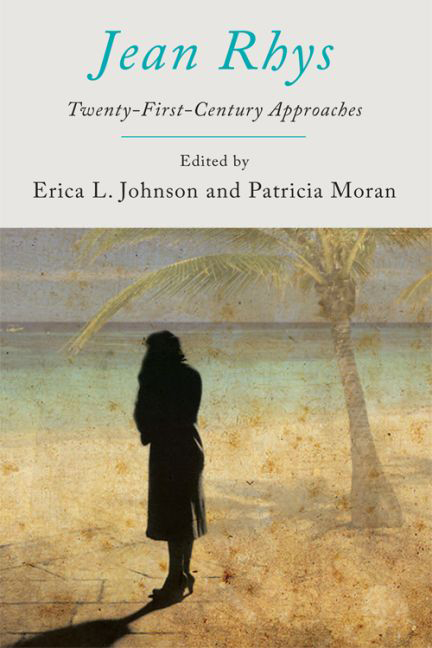Book contents
- Frontmatter
- Contents
- List of Figures
- Acknowledgements
- Notes on Contributors
- Introduction: The Haunting of Jean Rhys
- PART I Rhys and Modernist Aesthetics
- 1 Jean Rhys and Katherine Mansfield Writing the ‘sixth act’
- 2 Making a Scene: Rhys and the Aesthete at Mid-Century
- 3 On the Veranda: Jean Rhys's Material Modernism
- PART II Postcolonial Rhys
- PART III Affective Rhys
- Bibliography
- Index
2 - Making a Scene: Rhys and the Aesthete at Mid-Century
from PART I - Rhys and Modernist Aesthetics
Published online by Cambridge University Press: 12 September 2017
- Frontmatter
- Contents
- List of Figures
- Acknowledgements
- Notes on Contributors
- Introduction: The Haunting of Jean Rhys
- PART I Rhys and Modernist Aesthetics
- 1 Jean Rhys and Katherine Mansfield Writing the ‘sixth act’
- 2 Making a Scene: Rhys and the Aesthete at Mid-Century
- 3 On the Veranda: Jean Rhys's Material Modernism
- PART II Postcolonial Rhys
- PART III Affective Rhys
- Bibliography
- Index
Summary
Jazz is the new art of the unconscious.
Philip Larkin, ‘The Art of Jazz’ (1940)It's a smoky kind of voice […]
Jean Rhys, ‘Let Them Call It Jazz’ (1962)It's not a hopeless dream that one day soon there might exist a small troupe of readers as aesthetically literate as the people who listen to music at concerts and on the radio.
Brigid Brophy, Prancing Novelist (1973)Rhys's ‘Let Them Call It Jazz’ (originally published in 1962) implies that in spite of its distortion, appropriation and commodification by the forces of mass entertainment and leisure, jazz music retains the power to create intensely meaningful private acoustic spaces. Private acoustic space also describes a defining characteristic of modernist subjectivism, or, in spatial terms, interiority. Rhys shares with other post-World War II English writers a preoccupation with music scenes as inspirations for modernist interiority. Put rather starkly, music's power to inspire introspection and withdrawal, rather than connection and/or movement, encouraged some writers, including Rhys, to experiment with a character – the listener – who was also a modernist and aesthete. Rhys joins Philip Larkin and Brigid Brophy in this essay so as to encourage an exploration of their shared, if varied, fascination with the effects of midtwentieth- century music scenes on a listener's selfhood and sociability.
This essay proposes that Philip Larkin, Jean Rhys and Brigid Brophy wrote representations of modern listeners that contribute to new understandings of modernist aesthetics and cultural politics in the second half of the twentieth century. To place Rhys in the company of Larkin and Brophy is to nudge her postwar reputation away from the Caribbean orientation of Wide Sargasso Sea into a new frame of reference that positions her on the map of postwar (that is, post-World War II) English culture, a ‘shrinking island’, to be sure, but also a remarkably musical one. Rhys's twenty-first-century importance includes her postwar short fiction's explorations of the music scene. Along with Larkin and Brophy, Rhys used modernism's aestheticism and experiments with interiority (such as depth psychology, inner monologue, stream of consciousness, free indirect discourse and fascination with symbolism and the unconscious) to investigate the modern listener's complex subjective experience of music. Private acoustic space within the music scene suggests a somewhat controversial (especially in Larkin's case) identity: the music connoisseur.
- Type
- Chapter
- Information
- Jean RhysTwenty-First-Century Approaches, pp. 40 - 58Publisher: Edinburgh University PressPrint publication year: 2015

